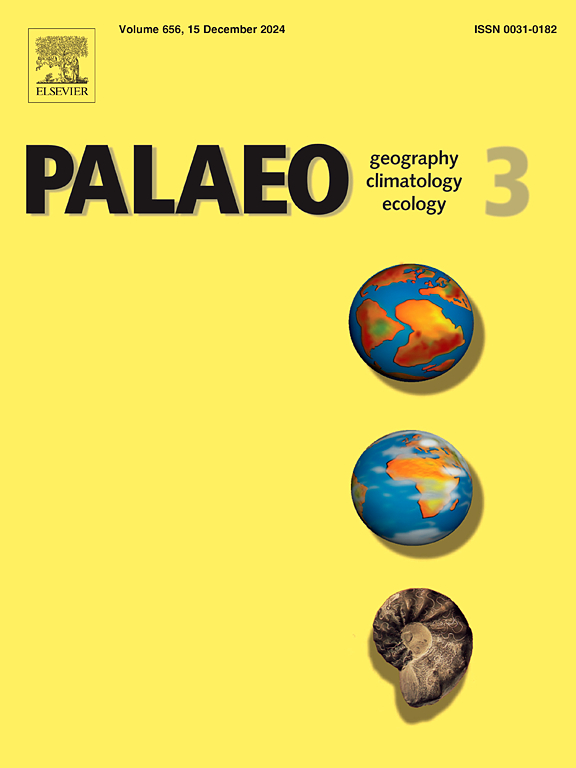上新世之前青藏高原长江上游的移动切入波和自下而上的排水整合
IF 2.7
2区 地球科学
Q2 GEOGRAPHY, PHYSICAL
Palaeogeography, Palaeoclimatology, Palaeoecology
Pub Date : 2025-02-15
DOI:10.1016/j.palaeo.2025.112810
引用次数: 0
摘要
长江上游的演变与青藏高原东南部的隆升和亚洲季风的演变所形成的地形发展有着复杂的联系。控制流域演化的不同过程导致了对维吾尔河流域形成时代的不同看法。本研究基于43个流域的线性河流剖面反演,重建了河流断裂点迁移记录的河流切割历史时空格局。结果表明:各支流裂缝点运移的起始时间跨度为10 ~ 3 Ma,沿主河道上游呈递减趋势;在中新世中期青藏高原东南部隆升加剧的结果,主干上的主要断裂点通过自下而上的整合过程向前移动,计算速率为118-274 km/Myr。这一迁移拐点和流域向上游的侵蚀在整合流域和扩大维吾尔自治区对青藏高原内部的影响方面发挥了关键作用,这一过程在上新世开始之前基本完成。本文章由计算机程序翻译,如有差异,请以英文原文为准。
Migrating incision wave and the bottom-up drainage integration of the upper Yangtze River on the Tibetan Plateau before Pliocene times
The evolution of the upper Yangtze River (UYR) is intricately tied to the developing topography shaped by the uplift of the southeastern Tibetan Plateau and the evolution of the Asian Monsoon. Diverse processes governing drainage evolution have given rise to varying perspectives on the formation age of the UYR. This study undertakes a comprehensive analysis, based on linear river-profile inversions of 43 catchments draining into the UYR, to reconstruct the spatial and temporal patterns of fluvial incision history as chronicled by river knickpoint migration. The results reveal that the initiation epochs of knickpoints migration in tributaries span from 10 Ma to 3 Ma, and exhibit a decreasing trend as one moves upstream along the main channel. The main knickpoint in the trunk, a consequence of intensified uplift in the southeastern Tibetan Plateau during the middle Miocene, migrated headward via a bottom-up integration process at a calculated rate of 118–274 km/Myr. This migratory knickpoint and headward erosion in the drainage played a pivotal role in integrating watersheds and expanding the UYR's influence onto the inner Tibetan Plateau, a process that was largely complete prior to the start of the Pliocene.
求助全文
通过发布文献求助,成功后即可免费获取论文全文。
去求助
来源期刊
CiteScore
5.90
自引率
10.00%
发文量
398
审稿时长
3.8 months
期刊介绍:
Palaeogeography, Palaeoclimatology, Palaeoecology is an international medium for the publication of high quality and multidisciplinary, original studies and comprehensive reviews in the field of palaeo-environmental geology. The journal aims at bringing together data with global implications from research in the many different disciplines involved in palaeo-environmental investigations.
By cutting across the boundaries of established sciences, it provides an interdisciplinary forum where issues of general interest can be discussed.

 求助内容:
求助内容: 应助结果提醒方式:
应助结果提醒方式:


